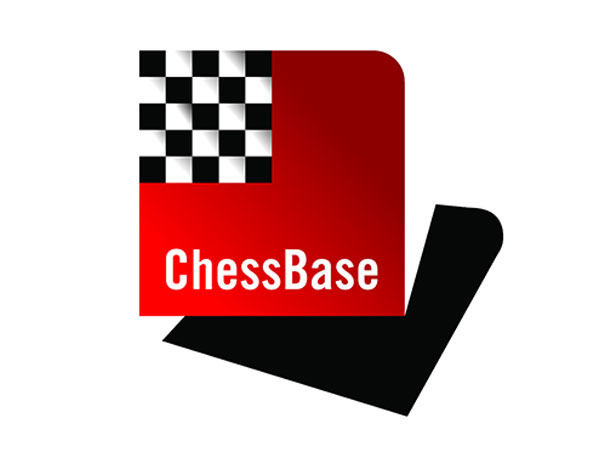A lasso for the horse

Black to move. Which continuation leads to a draw:
66...Nd2+ 67.Kd3 Nf3 or 66...Nh4 67.Kxd4 K...?

Karsten Müller in ChessBase Magazine
Do you like these lessons? There are plenty more by internationally renowned endgame expert Dr Karsten Müller in ChessBase Magazine, where you will also find openings articles and surveys, tactics, and of course annotations by the world's top grandmasters.
Click to go to the ChessBase Magazine page
Apart from his regular columns and video lectures in ChessBase Magazine there is a whole series of training DVDs by Karsten Müller, which are bestsellers in the ChessBase Shop.

New: ChessBase Magazine #165 (April/May)

Introduction by Karsten Müller
|
|
|
Opening surveys
Sagar Shah: English Opening A20
1.c4 e5 2.g3 Nf6 3.Bg2 h6
|

|
|
White does without Nc3, so as to avoid ...Bb4. According to Sagar Shah in 3...h6 Black has a sort of useful waiting move, ...Nc6 is delayed. After 4.Nc3 Bb4 5.Nd5 Nxd5 6.cxd5 we can see a difference – Black does not need to move his Nc6.
|
Souleidis: Double Fianchetto A50
1.d4 Nf6 2.c4 g6 3.Nf3 Bg7 4.g3 b6 5.Bg2 Bb7 6.0-0 0-0
|

|
|
According to Georgios Souleidis this setup is becoming more and more popular for Black. Above all after 7.Nc3 – the usual move - 7...Ne4 one can safely count on equality. After the stronger 7.d5 Black even has two promising continuations with 7...Ne4 and 7...Na6.
|
Sumets: Old Indian Defence A54
1.d4 Nf6 2.c4 d6 3.Nc3 Nbd7 4.Nf3 e5 5.Bg5 Be7 6.e3
|

|
|
A setup with e3 is not so aggressive, but in return it also offers fewer targets for the opponent to attack. For example, White does not have to protect a pawn on e4. As Andrey Sumets demonstrates, Black does not find it easy to equalise after 6...0-0 7.Be2.
|
Ris: Sicilian Defence B35
1.e4 c5 2.Nf3 Nc6 3.d4 cxd4 4.Nxd4 g6 5.Nc3 Bg7 6.Be3 Nf6 7.Bc4 0-0 8.Bb3 d5
|

|
|
This comes as a surprise. After all the d5-pawn is simply hanging. But as Robert Ris demonstrates in his article, 9.exd5 Na5 may be obvious, but after it the way to an advantage for White may be possible but, however, it is not easy to find over the board. |
Szabo: Sicilian Defence B90
1.e4 c5 2.Nf3 d6 3.d4 cxd4 4.Nxd4 Nf6 5.Nc3 a6 6.Be3 e5 7.Nb3 Be6 8.f3 Be7 9.Qd2 0-0 10.0-0-0 Nbd7 11.g4 b5 12.Rg1
|

|
|
With 12.Rg1 White deviates from the main variation (12.g5). One of the ideas can be seen after 12...b4 13.Nd5 – now Black cannot take on d5 with the knight, because the Be6 does not have access to the f5-square. As Krisztian Szabo shows, however, that is not the only idea behind 12.Rg1.
|
Havasi: French Defence C06
1.e4 e6 2.d4 d5 3.Nd2 Nf6 4.e5 Nfd7 5.Bd3 c5 6.c3 Nc6 7.Ne2 cxd4 8.cxd4 f6 9.exf6 Nxf6 10.0-0 Bd6 11.Nf3 0-0 12.Bf4 Bxf4 13.Nxf4 Ne4
|

|
|
In this principled variation – there is little occasion to deviate – White may have a slight initiative after 14.Qc1, but according to Gergo Havasi Black can maintain the equilibrium with accurate play.
|
Marin: French Defence C08
1.e4 e6 2.d4 d5 3.Nd2 c5 4.exd5 exd5 5.Bb5+ Nc6 6.Qe2+ Be7 7.dxc5 Nf6 8.Nb3 0-0
|

|
|
With the two checks on moves 5 and 6, White is trying to impose on the play a forcing character. But as Mihail Marin’s analyses prove, Black can stand up to the pressure quite well.
|
Kuzmin: Slav D11
1.d4 d5 2.c4 c6 3.Nf3 Nf6 4.e3 Bg4 5.h3 Bh5 6.g4 Bg6 7.Ne5
|

|
|
The actual idea behind the clear opening plan presented by Alexey Kuzmin has not yet been executed in the diagram: White wants to play Nd2 and then, without having to worry about the c4-pawn, be able to develop his bishop to g2.
|
Postny: Queen's Gambit D38
1.d4 d5 2.c4 e6 3.Nf3 Nf6 4.Nc3 Bb4 5.Bg5 h6 6.Bxf6 Qxf6 7.e3 0-0 8.Rc1 dxc4 9.Bxc4 c5 10.0-0 cxd4
|

|
|
The position in the diagram has been seen in several recent games and Evgeny Postny examines the latest trends. His conclusion: the white initiative is only temporary, Black can have high hopes of equalising.
|
Stohl: Semi-Slav/Catalan E04
1.d4 d5 2.c4 e6 3.Nf3 c6 4.Nc3 e6 5.g3
|

|
|
It starts with the Semi-Slav and transposes to the Catalan. For Igor Stohl it is clear that Black should take the c4-pawn, but after that there are still some open questions.
|
Krasenkow: Bogo Indian Defence E11
1.d4 Nf6 2.c4 e6 3.Nf3 Bb4+ 4.Nbd2 b6 5.a3 Bxd2+ 6.Bxd2 Bb7 7.Bg5 d6 8.e3 Nbd7
|

|
|
Michal Krasenkow presents his own repertoire against the Bogo-Indian. In the second part he deals with the main variation of this system. It is not easy for Black to achieve complete equality.
|
|
























